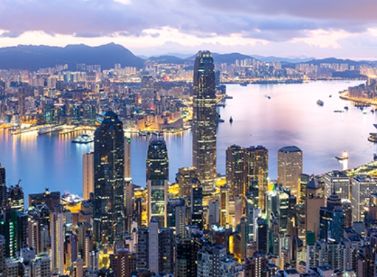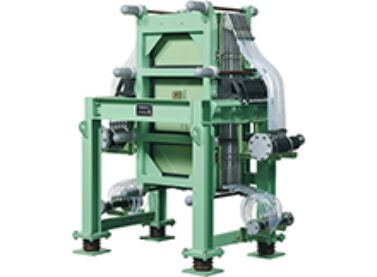Water and Wastewater Asia magazine spoke to Makoto Okura, representative managing director, electrode technologies business, to take a deeper look at De Nora’s CECHLO®- On-site Chlorine Generation (OSCG) technology and future plans for the business. To read the original article, click here
Q: Is this the first time Hong Kong is adopting De Nora’s water disinfection systems using on-site chlorine generation technology?
MO: We have been supplying solutions for 30 years in Hong Kong, but this is the first time for our CECHLO on-site chlorine generation (OSCG) technology. Since the 1980s, we have been supplying our own electrochemical technologies in Hong Kong, not only for power stations but also for drinking water, pumping stations, wastewater and public pools.
Q: What other countries have adopted this technology thus far?
MO: Four locations in Japan, as well as North Africa, and Nigeria. Some of these countries like Africa adopt this technology as they do not have the infrastructure for a chlorination plant. For the project in Nigeria, we worked with GE Water Process Technologies as EPC Contractor. WATTCCON, which is the end user located in Kaduna, Nigeria, established a new plant manufacturing 40,000 litres per day of Sodium Hypochlorite at 15 per cent strength with GE Water & Process Technologies USA and De Nora.
They said that the project is the pioneer Sodium Hypochlorite plant in West Africa, using the friendliest process in terms of Health, Safety and Environmental impact. This CECHLO onsite hypo generation plant shows the typical trend towards elimination of potential risk of transporting and storing hazardous chlorine gas even in Africa.
Q: How has the CECHLO system evolved from 10 years ago in terms of power efficiency, generation capacity and cost?
MO: We have been developing the CECHLO technology for decades, obtaining substantial advancement in performances, accounted as power consumption. Since its introduction, power consumption was reduced to less than 50 per cent despite doubling the capacity output.
Q: Compared to traditional usage of chlorine in the water industry, what is the uptake rate of alternative disinfection technologies globally and in Asia?
MO: Demand has been growing in the region. However, in most Asian countries such as Indonesia and other developing nations, industries face less stringent regulatory frameworks with regards to wastewater recovery, and so there are little incentives for industrial players to pursue advanced solutions and integrate the environment as a factor in their decision on new technology adoption.
However, it is encouraging that in recent years, with developments in environmental activism and regulatory stringency in Asia, companies are increasingly more incentivised to raise standards in their industrial processes, which allows for and even promotes innovation.
We believe that demand from our customers for environmentally friendly products will continue to grow in this region as we help companies attain their environmental objectives, through reducing water consumption and easing the shortage of clean usable water through water re-use.
De Nora has a range of solutions with varying levels of cost and sophistication for this reason – to provide attainable options for different markets to take the steps necessary to adopt solutions.
Q: What are the benefits of using alternative disinfection technologies? On what basis should clients consider adopting them?
MO: Over the years, disinfection using gas chlorination, being the less capital expensive, has been the most common water treatment option in developing countries, but with potential health hazards. As legislation gets increasingly stringent around maintaining low levels of residual chlorine, more countries are open to adopt on-site generation of chlorine and hypochlorite (in short electrochlorination) as part of their municipal water supply process.
Q: What is the future like for alternative disinfection technologies?
MO: A key trend we foresee will be that as we face increasing pressures on our limited water resources, there will be an increasing focus on alternative water sources, like water reuse. Potable and non-potable water reuse will eventually be essential to meet global demand, especially when approaches like water use efficiency and consumption reductions are maximised.
However, in order for reclaimed wastewater to be considered safe, the application requires the removal of Contaminants of Emerging Concern, or CECs, also referred to as micro-pollutants. This represents opportunities for solutions including the Biologically Active Filter (BAF), a well-known technology which can be combined with ozone to remove micro-pollutants from wastewater and related issues for water reuse applications
WHY HONG KONG CHOSE DE NORA’S CECHLO-OSCG TECHNOLOGY
The decision for a territory-wide conversion by the Water Supplies Department (WSD) under the Hong Kong government was made to address safety concerns associated with liquid chlorine containers being transported and stored around highly populated waterworks.
The selected De Nora CECHLO system is an ion exchange membrane electrolytic technology which is used to produce chlorine gas and a 12.5 per cent high-concentration hypo on site.
Each of the potable water treatment plant will have a combined generation capacity of 16.9 tonnes of chlorine per day. All systems are expected to be operational by 2020.
CHO Ping-ho, chief electrical and mechanical engineer/maintenance of the WSD, tells WWA the reasons behind their choice of water disinfection system.
Q: Why did the Water Supplies Department of Hong Kong choose De Nora?
PH: An in-house review by WSD on the feasibility of local generation of chlorine for the use in water treatment works in Hong Kong has been conducted recently.
It was revealed that small-scale chlorine generation plant is more readily available in the commercial market, which makes local generation of chlorine technically viable. Since the use of chlorine for water disinfection is technically proven and cost effective, other disinfection solutions have not been considered in the review. De Nora was proposed by the contractors for compliance with WSD’s technical specifications and safety requirements given in the contract.
Q: What is the amount of chlorine needed in each water treatment plant in Hong Kong daily and where does Hong Kong purchase chlorine from?
PH: An average of 6 tonnes of chorine was used per day by the water treatment works in Hong Kong. Since there is no chlorine manufacturer in Hong Kong, we usually import liquefied chlorine from the Mainland, in cylinders and drums.
Q: Why did the Water Supplies Department decide to switch to chlorine generation?
PH: The biggest concern has always been safety. Benefits of an OSCG plant will be a reduction or elimination of liquid chlorine that needs to be stored and transported. Our quantitative risk assessment showed that there is some risk in the transportation and storage of liquefied chlorine, mostly safety concerns on chlorine gas leakage as there are indeed some possibilities, so we decided to have local generation of chlorine gas to do away with the safety issues.
We are always looking for a more reliable source. The problem with our suppliers from the Mainland is that sometimes we have fluctuation in supply. Chlorine generation technologies have improved generation by generation, and technologies nowadays can scale down to a suitable size to be installed in our water treatment plant.




